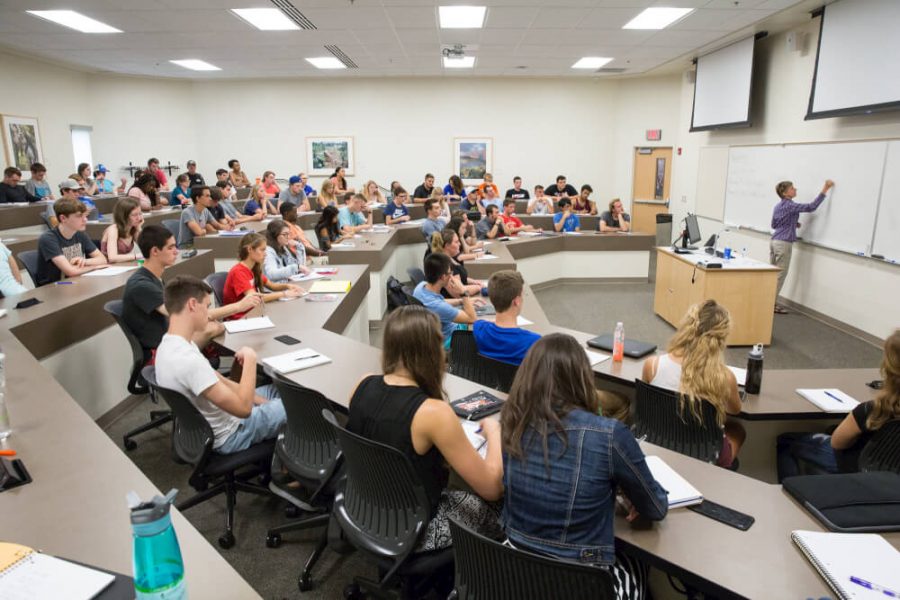GV sees drop in enrollment, focuses on retention
Nov 11, 2019
Grand Valley State University welcomed one of its largest first-year classes this fall, with 4,301 first-year students. However, even with this impressive class size, the university still faced a drop in overall enrollment between fall 2018 and fall 2019.
“Our head count this fall was 24,033, and last fall it was 24,677, so that would be a 2.6 percent decrease,” said Vice President for Enrollment Development Lynn Blue. “I think that probably, one of the places we can look for reasons is retention — students staying and persisting rather than dropping in and out is a problem. It has a fair bit to do with retention, and fewer new graduate students is part of the issue as well.”
This drop in enrollment is not specific to GVSU, but is an issue across the country. Blue said a main cause of lower enrollment is fewer students graduating high school. According to the most recent edition of “Knocking at the College Door,” Michigan’s highest number of high school graduates was in 2008, with a total of 115,183 students, but that number has since dropped; only 98,073 students graduated from Michigan public high schools last year. Blue said this has to do with a decreasing population — people are having less children.
While the enrollment drop is disappointing, Blue said it isn’t surprising. She believes GVSU is still in a great spot, especially compared to other universities.
“When the numbers come out from the other Michigan publics, we are in a much better spot than they are,” Blue said. “I mean, if you think about it, this year we had one of our largest incoming freshman classes, so that flies in the face of this. Not only was it one of the largest, but it was one of the brightest — we had the highest average GPA. So we didn’t go find less qualified students, it’s that good students want to come here. The decline in and of itself is a story, but it’s a much bigger story than just, ‘Grand Valley lost some people.’”
Blue said GVSU has the third highest retention rate in the state, only behind the University of Michigan and Michigan State University. However, Blue hopes to keep improving to a retention rate of 90 percent.
“Retention is an issue, but it’s an issue across the board,” Blue said. “Do I wish we had a higher (retention rate) number? You bet. As the person who sings songs about enrollment, I think we should be closer to 90 percent. The students we enroll are really good, well-qualified students, and they should be persisting at a rate similar to MSU because our profiles are alike.”
To work towards this 90 percent goal, Blue said it’s vital GVSU helps its students feel safe and comfortable in the classroom. A part of making the university comfortable is focusing on its processes, procedures and services, and making sure those things are working effectively. Blue said she communicates with GVSU’s directors and administration every Monday about retention rates and how the university can improve.
As an institution that runs on tuition dollars, Blue said the enrollment decrease is harmful for GVSU. When fewer students are paying tuition, the university’s budget decreases.
“You can’t run the place on debt,” Blue said. “So yes, (lower enrollment) has an impact. You can’t just write checks without money in the bank.”
While a decrease in enrollment is ultimately bad for the University and its budget, Blue said she’s most concerned about the students who don’t get the degree.
“They have debt, they don’t have any credential, they have half a transcript, and so there they are, already having to pay back a loan, and they don’t have a credential to get, maybe, a job that pays a little more,” Blue said. “When they leave short of a degree, it feels like a failure to me because I know the struggles the student will have. That’s the part I worry about the most, and to try to have the biggest impact that we can as a university, that this is a good place to stay, and to help students understand stopping out is a pretty serious decision because lots then don’t end up coming back to college.”























